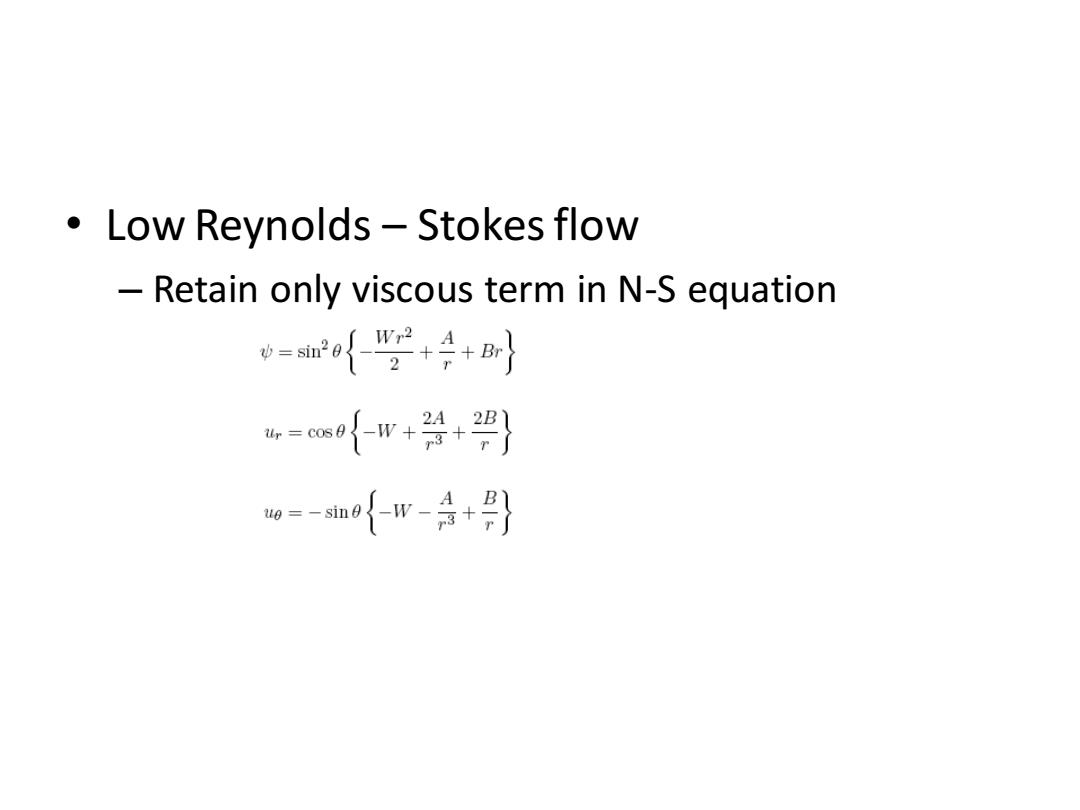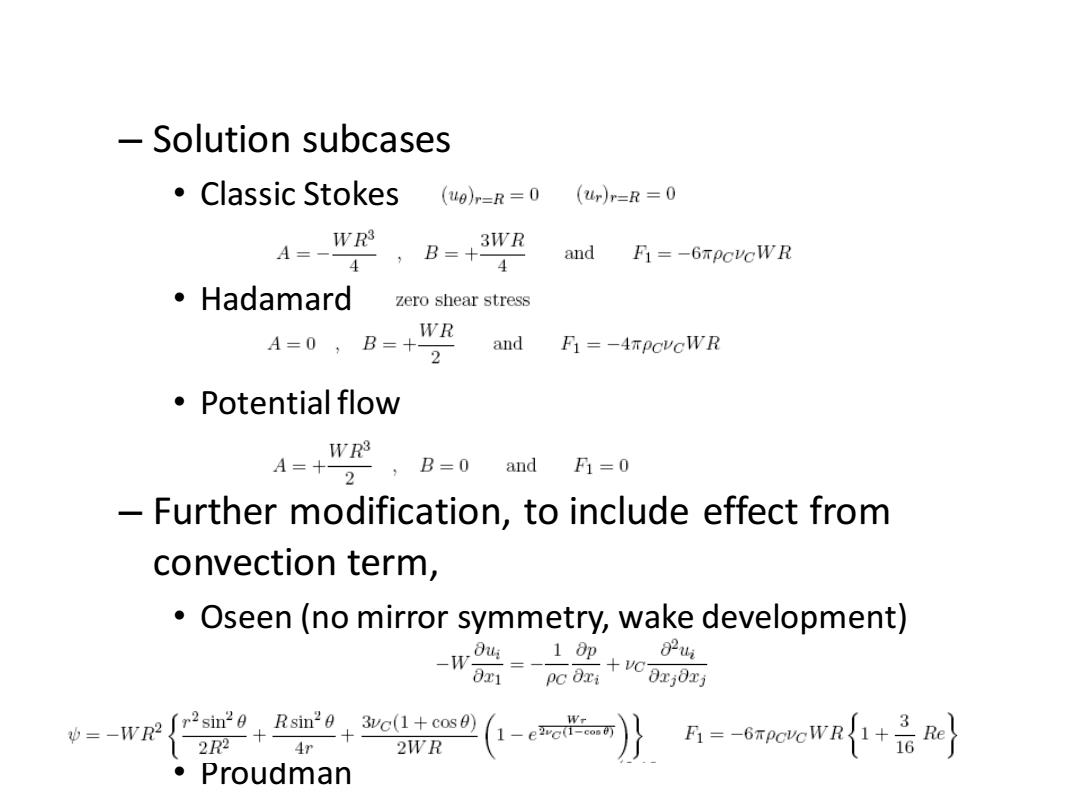
Low Reynolds Stokes flow Retain only viscous term in N-S equation =mo{"空+4+am} =m0{w+器+} o=-im{-w-号+}
• Low Reynolds – Stokes flow – Retain only viscous term in N-S equation

-Solution subcases ·Classic Stokes (U0)r=R=0 (Ur)r=R=0 A=- R3 ,B=+ 3WR 4 and F1=-6TPCVcWR 4 Hadamard zero shear stress A=0,B=+2 and F1=-4TPCVcWR ·Potential flow WR3 A=十 2 ,B=0 and F1=0 Further modification,to include effect from convection term, Oseen(no mirror symmetry,wake development) 8吃 W Di=1pC :0 0x1 pc Oxi =-wr{0+a9+rgt(-e》=-6eewa{+后} 2R2+ 。Proudman
– Solution subcases • Classic Stokes • Hadamard • Potential flow – Further modification, to include effect from convection term, • Oseen (no mirror symmetry, wake development) • Proudman

Flow with Re 0.5-couple thousand(experiment) Vortices develops at Re=30 Re increases and wake expands Re-130,wake reaches the particle size,begins oscillation Re-500,vortices begins to shed and convected to downstream Shedding frequency and Str Str =2fR/W Stable near-wake and a unstable,turbulent far-wake behind Re-1000,a flow around sphere and near-wake stable again,separates at 84 A=-6ewR+}
• Flow with Re 0.5-couple thousand(experiment) – Vortices develops at Re=30 – Re increases and wake expands – Re-130, wake reaches the particle size , begins oscillation – Re-500, vortices begins to shed and convected to downstream • Shedding frequency and Str • Stable near-wake and a unstable, turbulent far-wake behind – Re-1000, a flow around sphere and near-wake stable again, separates at 84°

Molecular effects Mean free path of the fluid molecules V.S.size Knudsen number Kn=λ/2R -A factor to Stokes drag (1+2AKn) 。Brownian motion -Diffusivity D=KT/6TucR Displacement Temperature gradient-thermophoresis -Radiation gradient-photophoresis Sound field-sonophoresis
Molecular effects • Mean free path of the fluid molecules V.S. size – Knudsen number – A factor to Stokes drag • Brownian motion – Diffusivity – Displacement • Temperature gradient- thermophoresis – Radiation gradient – photophoresis – Sound field- sonophoresis

Unsteady effect Particle is accelerating j F:=-Mij dt M-竖 volume uikujk d(volume) of fluid -Added mass matrix ·Symmetric Particle with plane symmetry will not experience force perpendicular to the plane -Difference with displaced mass (example,infinite thin plate) Real viscous application dvi 1 F:=-M -PcACulVV;
Unsteady effect • Particle is accelerating – Added mass matrix • Symmetric • Particle with plane symmetry will not experience force perpendicular to the plane – Difference with displaced mass (example, infinite thin plate) – Real viscous application